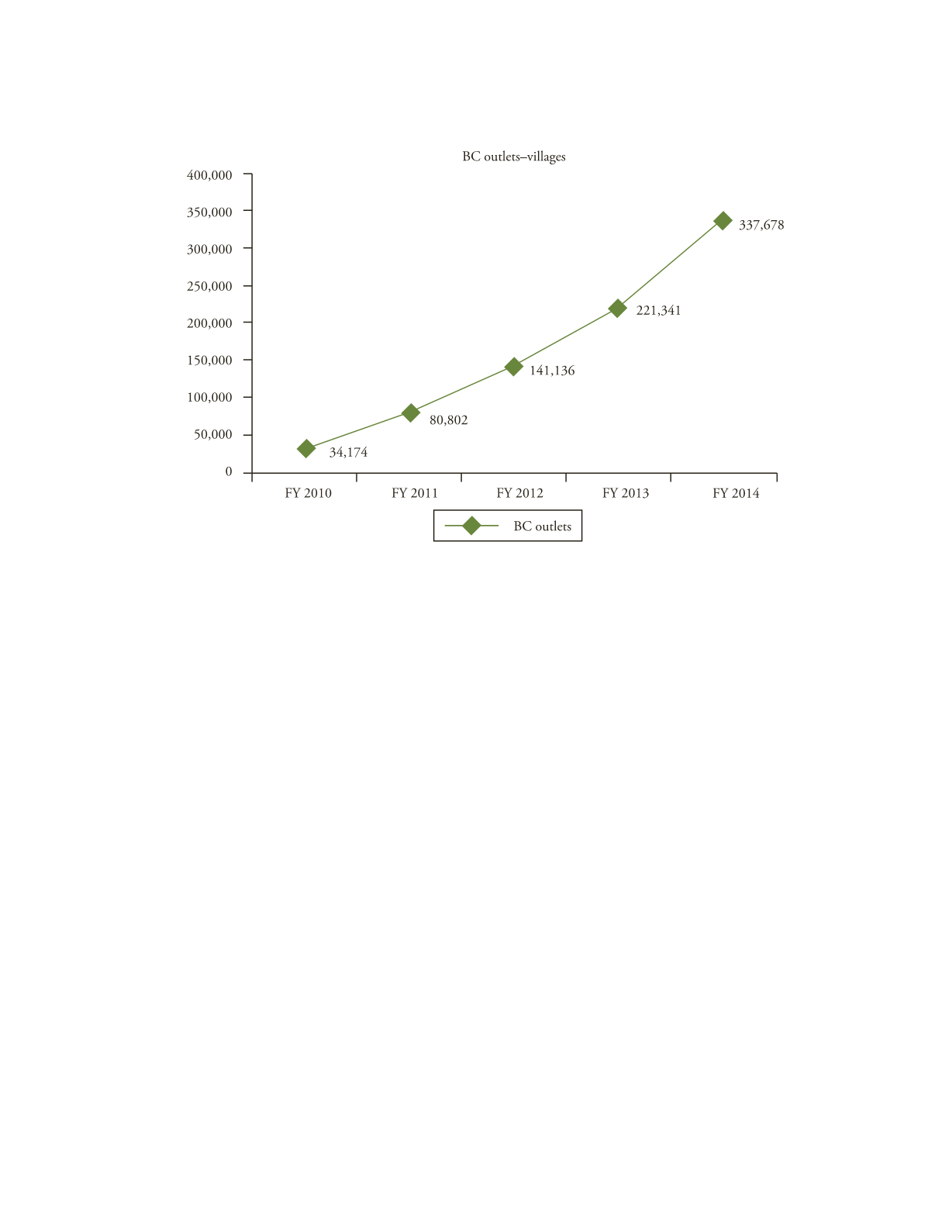
i nc lu s i ve f i nanc e i nd i a re port 2014
54
out of which 170 could not be surveyed, because of being
unreachable or unwilling, having stopped CSP work or
unhappy with it. It reported that a large proportion of
these agents were no longer offering services with about a
quarter of the CSPs being dormant and unavailable.
About 25 per cent of CSPs (215/860) were unable to
transact mainly because of technological barriers such
as poor connectivity and defective cards or devices. This
compares with Microsave’s estimates of CSP dormancy
of 22–43 per cent. 29 per cent of CSPs offered only one
product category, 23 per cent offered two products and
16 per cent offered only no-frills accounts. Median num-
ber of transactions was 14 per day and over 58 per cent of
respondents reported that they earned less than Rs. 3,000
per month and 21 per cent reported that they earned less
than Rs. 1,000 per month. The median monthly income
of CSPs was Rs. 2,735.
There was a marked difference between rural and urban
CSPs. While there was hope for a sustained business
case for CSPs in urban areas, rural CSPs had fewer
transactions and revenues and were not sustainable. It
highlighted that improving remuneration of CSPs should
be a priority and banks should provide marketing support
to increase their number and value of transactions. The
study had concluded that the business case for the CSP
network remains to be proved and that banks would need
to invest in making financial inclusion a part of their
core business.
The second round of the above CAB-CGAP survey
was conducted during September–November 2013. The
findings suggest that a substantial number of the CSPs
were untraceable and of even those found to be work-
ing a significant number had never conducted a single
transaction.
3
The team tried to contact 2,358 CSPs of
whom only 1,254 could be surveyed and of remaining
11,04, 983 were not reachable and 87 unwilling to be in-
terviewed. Thus only 53 per cent of the BC agents could
be reached with the remaining 47 per cent untraceable.
The survey also found that attrition rate of BCs ranged
between 25 and 34 per cent per annum, thereby raising
a question mark about the sustainability of the model.
Of the 860 CSPs surveyed in 2012, 15 months later
only 500 remained agents could be surveyed with 93
unreachable. Thus a minimum of 267 CSPs and up to a
F
IGURE
3.1
India: Number of BC Outlets
Source
:
RBI Annual Report 2013–14
.


